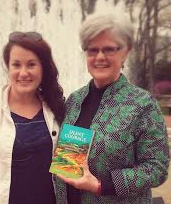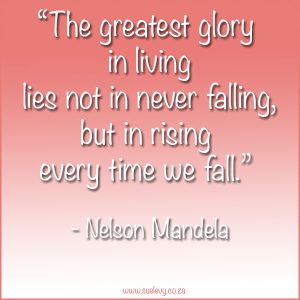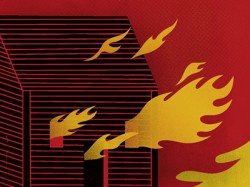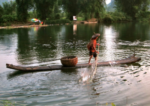Last updated on September 28th, 2017 at 03:11 pm
Mary Byrne Eigel just finished her big dream of publishing her 1st book, Silent Courage: My Lifelong Journey Through Pain to Wellness.
It’s a memoir of her 40-year triumph over chronic pain and how she healed her mind, body, and spirit in the process. Mary’s pain was a result of being born with bilateral hip dysplasia.
The kicker was that her parents never told her this. She never knew why her legs hurt. She never knew why she was different. She always thought she had an unspeakable condition. This silence was finally broken for Mary when she was 25.
Eventually, multiple surgeries relieved her physical suffering.
However, the abrupt absence of her chronic pain forced Mary to confront the mental, physical and spiritual dimensions of the healing. With gratitude for the lessons she has learned, Mary presents an insightful perspective in her book on the attitude, tools, and resources she enlisted while navigating her own road to wellness and a pain-free lifestyle.
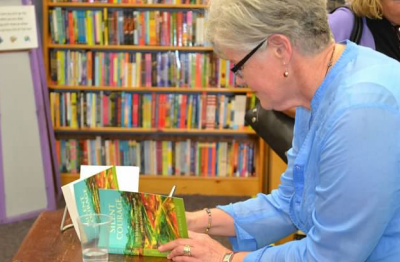
It has been a true honor for me to see my mother overcome her pain, thrive through her operations and tell her story that she’s been talking about writing since I was in 3rd grade. (Newsflash: I’m A LOT older than a third grader these days.)
I am fortunate to have been involved in the writing, editing and marketing parts of her book.
Another newsflash: my mom is not a writer; she’s been an artist and an art teacher for the past 40 years.
I knew her desire to write this book, and I kept telling her, “Mom, a writer is someone who writes. You are writing, so you are a writer.” The only thing better than having your own dreams come true is to encourage someone else’s dream.
It has been a blessing to help my mom. And now she is sharing the good fortunate of helping others write their stories through her writing and healing workshops.
I interviewed Mary about writing her book, what obstacles she overcame and what advice she has for new writers.
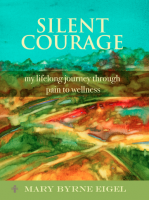
Here’s what Mary had to Say About Silent Courage:
1. Describe your book in 5 words.
Successfully navigating through chronic pain.
2. What does the title Silent Courage mean to you?
The silent part comes from the fact that I learned as a child not to speak about this huge, horrible presence of pain that was with me my whole life.
When I asked my parents why my legs hurt, they would never divulge the reason and did not want to discuss it—that was the overarching silent part.
The courage part for me is about believing that I had the resources I needed to successfully make it through a challenging situation—that I would not only survive but could thrive as a result of it.
3. When did you know you wanted to write a book?
When I was forty-years-old and I had my first hip replacement I learned what it meant to be without pain. A year later, I had my second hip replacement and all my pain was gone.
The doctors and nurses told me, “You’re good to go! You have no pain! We’ll see you in a year.”
Navigating on crutches, strenuous daily rehab exercises, planning how to get through 16 weeks of non-weight bearing were not my biggest challenges. My problem was that my stored experiences of pain kept haunting me and telling me that any movements would be painful.
It was like a magician pulling back a curtain and telling me, “Poof! Your pain has vanished!” It felt unreal and unsettling.
When I asked my surgeon where to find a support group for people who have been in long-term chronic and were instantly pain-free, his response of, “I don’t even know what you are talking about,” was equally startling.
It was the frustration of clearly knowing what I needed and someone saying that it doesn’t exist that lit the initial desire to research this subject.
4. From there, what jump-started you into the process of writing the book?
I was a professional artist and art teacher and initially thought I would use pictures to explain what I was trying to say about my pain. How I felt disconnected—that even after surgery removed my physical pain there were still razor blades and barbed wire left in my body.
Did the surgeons get it all out? It felt like there were shadows of little demons remaining that needed to be addressed.
My hip surgeries happened between 1990-1991. Then in 2003, I was hit by a passenger van on the highway. I cascaded back into a world of unrelenting pain—that was when I began writing and writing.
At that point, I began to see that maybe I wasn’t going to draw pictures, maybe I was supposed to write. Words came pouring out onto the pages during that time—I didn’t even know where they were coming from.
Soon after, I began blogging.
My frustration prior to having a blog about chronic pain was that my interests fell between disciplines. I was talking about needing a support group for someone who had been in pain. I was talking about this to medical doctors and surgeons when I should have been talking to counselors.
When my daughter encouraged me to start blogging, then I realized I could quickly go beyond the local audience. I was able to connect with people around the world who resonated with my experience.
If I had not been able to connect with other like-minded people, then it would have been tough for me to get enough affirmation to keep going with the book.
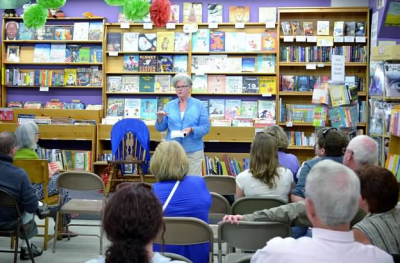
5. Before you wrote this book, did you have any dreams about writing?
I loved to write but never aspired to be a writer.
I loved writing, in the same way, I loved drawing and painting. There’s that descriptive part of writing where you can animate your words and bring them to life.
I took writing classes in grad school and was really encouraged to write the “movies in my mind.” There wasn’t a particular story I had, but it was more about the process of painting out these “word pictures” that really appealed to me.
6. Now that you have written your first book, what is your current dream/goal?
I want to see how and where people connect with my story. I’d love to encourage conversation about the mind, body and spirit aspects of pain that I experienced and the alternative therapies for healing.
I also want to encourage people to talk about how difficult it is when we harbor secrets about traumatic things and we don’t process them.
I love connecting with these topics and engaging people in larger conversations to broaden understanding and overall wellness.
7. What was the biggest obstacle you had to overcome to publish your book?
Believing that I could write!
I never had a problem free writing or journaling, but coherently connecting thoughts and transitioning between chapters were both challenging for me.
Then there’s the technical pieces of writing—the dangling participles, the gerunds, all the stuff that grammar geeks love—which can be very intimidating for a new author.
I wrote the way that I talked, but that’s not necessarily good grammar.
8. What advice would you give to encourage people who think they are “not a writer?”
a. If you feel that you have a story you need to tell, spend a chunk of time on it every day—even if it’s minimal.
b. Don’t get hung up on the technical aspects of writing, just focus on getting your thoughts on paper. (You can hire a good editor later.)
c. Find your speaking voice. Write as if you were in conversation.
d. Connect with what you know to be true. Don’t worry about much more than that.
e. Be sure to hire a few good editors. I can’t stress that enough. They can help you envision your project as a whole and how the parts can work together on top of taking care of all the grammar. Seems simple, but you’d be surprised how many authors avoid that step.
May you find your voice and the courage to tell your story,
Katie Eigel
PS. Thanks, mom!

Katie Eigel is a freelance writer and social media strategist specializing in travel adventure stories. Katie currently works with best-selling authors, fortune 500 companies, and start-up entrepreneurs to strategize how to amplify their brands online and offline. The 8WD project will tell you that Katie’s 8WD travel stories profoundly changed people’s views of what it means to live your travel dreams.
Note: Articles by Katie Eigel may contain affiliate links, and Katie and/or 8WD could be compensated if you purchase after clicking on an affiliate link.
